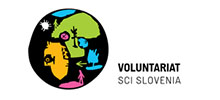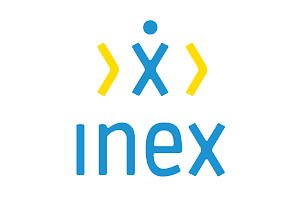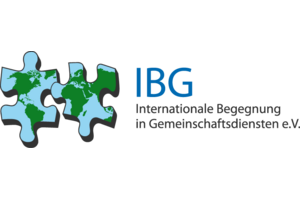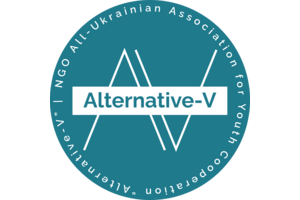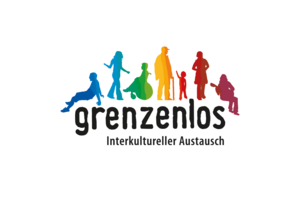CONCRETE METHODS
In this Chapter, you can choose methods to use at your activities. We selected methods you can use for reflection, but we also have some that are great for evaluation and nicely closing your activities.
Tags (key words on the left side) and icons will simplify your choice:
 shows activities useful for reflection
shows activities useful for reflection marks those more useful for evaluation
marks those more useful for evaluation notes which activities are useful for closing the projects.
notes which activities are useful for closing the projects.
Find your activity!

Main objective(s): Reflecting in groups and in the field about the competence development
Length: 1hr preparation - 1-3hrs activity time (depending on the extent)
Materials needed: Station cards, direction signals, markers, tape, cones or visible objects, pens
Step by step methodology:
- Prepare station cards, participant reflection forms and the initial orientation cards. The station cards contains the number of the station, the name of a competence, the reflection activity and the instructions how to get to the next station (ex. "2. Station - Communication - How much did this workcamp help you develop your communication skills? Rate from 1 to 5 - 1 not at all / 5 a lot - The next station is on your way to the castle under the small bridge"). The reflection forms are blank and only have the number of the stations on them. The orientation card contains the indication where each group should start from (ex. "You start from station 8. You will find this station by the entrance of the castle next to the small well").
- Set up the orientation path in the surrounding area (forets, park, garden, etc). The path's length depends on the length of the activity you want to have. Make sure the path is well marked so the participants cannot get lost easilly.
- On the path mark 5 to 10 station with a cone or a visible object and leave the corresponding station card there
- Divide the group in groups of 2-3 and give each participant a pen and a relfection form. Each group also recives the first orientation card, which instructs them to which station they should start from.
- Give the instruction to the participants (ex. You will play an orientation game. Each group will need to pass through 9 stations. Each station represents a competence and is marked by a cone and has a station card with instructions. At each of the station you need to reflect on the competence and follow the given instructions using your form. On each station it will be indicated how to find the next station. Once you have checked all the stations, come back to the camp).
- At the end debrief the activity with all the group.
Tip: During the activity it is good to be on the path and guide the participants who might have problems finding the path.
This methodology was used in the Football for Development project.
2. Creative Competence Reflection Performance

Length: 2hrs preparation - 15-30min presentation
Main objective(s): Reflect in a creative and entertaining way the competence development
Materials needed: Paper, pens, scissors, bowl (or bucket or hat)
Step by step methodology:
- write down the competences on small paper/cards (you can use those that are listed in IM-PROVE app)
- mix them in 1 bowl
- divide the group in 2-3 groups
- Ask each group to pick 3 to 5 cards (depending on the size of each groups and nr. of cards)
- Then ask each group to create a performance out of the set of cards (the type of performance: song, theatre, foto shooting, dance,… is left free to the creative appreciation of each group - it can even be something as you can see on the picture), which reflects their competence development.The guidelines should remain basic, as the task should encourage the free and creative minds of the participants.
- Give them 2hrs to create their performance
- Finally give each group 15-30min to present their outcome
- Run a small debriefing with all the participants about the activity - how did it go, what did they struggle with, answering their questions etc.
This methodology was used in the Football for Development project.
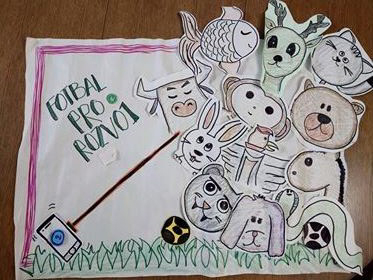
3. Reflection Ball

Length: Depends on the size of the group and their participation - from 5-15 minutes
Main objective(s): Reflection in groups
Materials needed: Soft ball
Step by step methodology:
- Put participants in the circle
- Ask them to think about the most important lesson learned from the same day or the day before. (You can use the questions we prepared. We would recomend you to choose only 2-3 each time.)
- Throw the ball to the first participant, after answering this question, the participant throws the ball to another person etc.
List of possible Guiding questions:
- Now that it’s over, what are my first thoughts about this overall workcamp?
- What were some of the most interesting discoveries I made while working on this workcamp? About myself? About others?
- What were some of my most challenging moments and what made them so?
- What were some of my most powerful learning moments and what made them so?
- What is the most important thing I learned personally?
- What got in the way of my progress, if anything?
- How well did I and my team communicate overall?
- What were some things my teammates did that helped me to learn or overcome obstacles?
- How did I help others during this process?
- Were my goals/expectations mostly met, and how much did I deviate from them if any?
- What did I learn were my greatest strengths? My biggest areas for improvement?
- What would I do differently if I were to approach the same problem again?
- What moments was I most proud of?
- What could I do differently from a personal standpoint the next time I work with the same group or a different one?
- What’s the one thing about myself above all others I would like to work to improve?
- How can I better support and encourage my teammates on future projects?
- How will I use what I’ve learned in the future?
- What did I see that was different or unfamiliar?
- What do I feel about what I saw or experienced?
- What made me uncomfortable? Why was I uncomfortable?
- Was there anything really difficult that happened at the workcamp? If so, why?
- Was there anything that really disturbed you? Why?
- What questions did this experience bring up for me?
- What did the people I encountered teach me about myself, about the world?
- Why did you decide to do this?
- What have I learned about myself through this experience?
- How have you challenged yourself, your ideals, your philosophies, your concept of life or the way you live?
4. Reflection Triads

Length: 45min
Main objective(s): Practice active listening and reflection
Materials needed: papers, pens
Step by step methodology:
- The participants are going to work in groups of three, where each participant gets to try three certain roles; speaker, listener and recorder. Share the question(s) they are going to reflect upon, for example, at which moment in my life did I learn the most valuable lesson? What was present then? Tell them that they have 10 minutes in each role and that you are going to tell them when half of the time is left, as well as when to switch roles. Give all instructions before you divide them up into groups of three (preferably group participants that do not know each other very well) and ask them to decide who is going to start in which role. Distribute three papers and some pencils to each group and let them spread out and start.
- After 10 minutes, let the participants know it's time to switch roles (make a sound, ring a bell, put on some music so they know they should finish and start over with different roles). Repeat the process, until all participants are in all roles. After sharing is complete, invite all the participants in the plenary and debrief with the following questions: What happened? How was this for you? How did you feel when you had to share? How did you feel being in different roles? Which one was the most comfortable for you? What was the most important thing you learnt or realized?"
5. Blob Tree

Length: 15-30minutes
Main objective(s): Reflection
Materials needed: Blob tree copies (no. = no. of volunteers), colors/markers
Blob Tree was created by behavioural psychologist Pip Wilson, who is a psycho-educational gamester and EQ developer. This test helps us to recognize and strengthen emotions. The Blobs are simple. They deal with deep issues using the primary languages we learn from infancy – feelings and body language. The Blobs are neither male nor female, young nor old, European nor African, ancient nor modern. They are outside of culture.
Blobs are the best of us and the worst of us. They don’t tell us what we ought to do, or what we mustn’t do…they merely show us how a variety of people feel.
Without words, the Blobs can be interpreted in a hundred different ways. There is no right and wrong about the Blobs, which is very important. A leader who uses them in a ‘one way of reading them only way’ will find that the rest of their group become very frustrated in discussions. Each picture is a means to a conversation, rather than a problem to be solved or a message to be agreed upon. If the people you are working with read the characters in totally opposing ways, that’s fine. We each see the world through our own eyes. Allowing others to share their feelings enables group members to understand and appreciate one another. For each of us, emotional literacy is a journey of self understanding.
Step by step methodology:
- Hand out a photocopy of the Blob tree to each volunteer. Give them few moments to look at the image and let them think about their own interpretation about each blob character's feelings.
- Explain that you want to give them a chance to record how they are feeling about what ever you want to reflect on - it can be the whole day, or something more specific. Volunteers think about which blob character they most identify with and colour it.
- Ask volunteers to share their blob tree eather with those near them (2 or 3) or with the whole group, and discuss their reasons for chosing their blob.
- You can do Blob tree activity each day, with the same questions, and volunteers can see on daily baiss how their feelings are changing.
Source: https://www.blobtree.com/
Important note: Here you can download a sheet of paper that you can use for this activity. As Blob tree is a copyrighted image, we have created another version called "Cats' Path", which can be used in the same way for your activity.
6. 3x what

Length: 15min
Main objective(s): Final reflection of learning outcomes and planning what's next
Materials needed: handout with questions
This activity is best performed after an activity where you are defining learning outcomes.
Step by step methodology:
- Tell the participants they will be thinking about next steps on their learning journey as a follow up to this workcamp.
- Divide handouts to participants with the following questions: What…. did you get out of the workamp/workshop? So what…. what value does this has, what questions were raised? Now what?…. What can you do with this new competence? (for download below)
- You can ask participatns to share responses in pairs and define 3 next steps together. Steps should be concrete and practical. What will you do as a result of this workcamp? How will you spread / develop the competences?
7. The food review

Length: 10min
Main objective(s): Reflection
Materials needed: papers, crayons
Step by step methodology:
- Divide papers to participants and invite them to draw a dish which represents their learning and feeling throughout the day.
- Invite them to share in a circle their association of the day with different dishes they draw.
8. Mirror Reflection

Length: around 60 min., apr. 5 minutes for each volunteer
Main objective(s):
- To encourage volunteers to reflect on their own learning
- To support volunteerss into looking at themselves and their learning from another point of view
- To highlight the important elements of one's learning
Materials needed: a box, a small mirror fitting in the box, a cover (sheet, blanket etc.) that cover the whole box and can even flow over, a few sheets of paper
IMPORTANT NOTE: This activity should be used by an experienced trainer or facilitator. If you don't feel like having too many experiences yet, we suggest to select other activities now and when you gain experience, get back to this one.
Step by step methodology:
- At the end of the workcamp, in the middle of the volunteers' circle, there will be a box with a cover on top. Volunteers will be told that in the box there is the photo portrait of each person.
- In turns, volunteers will peek in the box, see the face of a volunteer and talk about that person, without giving any type of hint on who the respective person is. (Campleaders will have to change the "photo" afterwards).
- Key questions to ask them after they look at the photo:
- What do you think about that person we all met?
- What changes have you seen in this person during the time here? What competences has s/he learnt during the workcamp?
- What advice would you give to the person?
- (Campleaders can add some funny questions or other relevant ones.)
THE METHOD is that in the box (besides a few pages that make the simulation of changing photos) volunteers will see a mirror. Surprising the volunteer, he/she will speak about themselves without having prepared answers beforehand, here more sincerity.
Another part of reflection, is that participants will listen to the comments of each one and see themselves through the eyes of others, wondering if it's about them talking. On the other hand, participants who have been in front of the mirror, will be able to further reflect on their learning hearing other points of view.
Source: According to Cosmin Saic, https://www.salto-youth.net/tools/toolbox/tool/reflective-reflection.2074/
9. HOROSCOPE forecast

Length: 10 minutes
Main objective(s): Reflection to prepare for the day, but can be used for setting expectations as well as for looking back
Materials needed: A4 papers, pens
Step by step methodology:
- Ask participants: Did you ever read a horoscope in a newspaper? You are invited to prepare (write) a horoscope forecast for your sun sign, for today. Think about what you would like to learn and achieve, how you would you like to feel and contribute. Use your creativity and tell us what the horoscope says.
- Give 10 minutes to participants to prepare their horoscopes on a paper. Ideally, you can give an example for yourself, so they get the point.
- After, invite them to share. You can ask a volunteer and then go from that sign onwards :-)
- *activity can be also used for setting expectations or for looking back- in this case, ask: if you would look back at the day, what would your horoscope say?
10. Frankenstein

Length: 30 minutes, 5x during the whole workcamp on a regular basis
Main objective(s): To let the volunteers analyse their learning path on a regular basis of the workcamp
Materials needed: Flipchart papers or sheets of papers, coloured markers, colours.
Step by step methodology:
Volunteers will be divided into pairs, in order to regularly analyse their learning process, focusing on:
a) new skills
b) new attitudes
c) new knowledge
they have gained during the previous day(s).The pairs shall receive two (flipcharts) sheets of paper, one each.
Volunteers have to draw a body part on the papers:
Day 1 – Arms
Day 2 - Legs
Day 3 – Chest
Day 4 – HeadVolunteers write and draw on this body parts the learning outcomes.
- Campleaders shall keep these flipcharts/ sheets of paper until the final day.
- Volunteers will be given an extra flipchart/ a sheet of paper which they have to shape as a heart, where they have to write the learning outcomes of this workcamp, and put together the person they have drawn in the previous day.
Source: According to Lorenzo Nava, https://www.salto-youth.net/tools/toolbox/tool/frankenstein-reflection-on-learning.965/
11. LOVE reflection

Length: 10 minutes
Main objective(s): To track our learning, dream, relax and embrace with meditation, ideally to start a day with
Materials needed: poster with LOVE letters and words, preferably with illustrations. Diaries, for participants to answer questions, pencils
Step by step methodology:
This method can be used every day in the morning, to start with reflecting on our learning, anticipating the day, observing our moods and surroundings and meditating. Each letter of the acronym LOVE, represents one activity.
- Participants should open their diaries. For each "letter", give participants about 1-2 minutes to write down anything that comes to their minds regarding the questions. It might be just a flow of thoughts they write down for themselves - whatever is most useful for them.
- We start with L - What have I learned so far?
- Continue with O - Observe, what do I feel?
- V - Visualize - Imagine the day ahead, what is my goal for the day?
- E - embrace; short meditation technique is practiced.
Tip: Example meditation technique (page 9 and 10): DragonDreaming
12. Blog Writing


Length: 25min
Main objective(s):
- To stimulate participants’ to prepare written reflection
- To ensure objective reporting about the project
- To raise awareness of what is going on
Materials needed: papers or pens and laptops
Step by step methodology:
Ask participants to individualy write a blog daily. We can also divide them in groups, and each group writes a daily blog post. The participants write whatever they want about this particular day, when they need to write a blog. It is also important to provide some time after the dinner where one group will be able to work and others will probably be free. Tell the participants that you will publish the blog on the Facebook or webpage and ask if they are OK with it.
Questions they might answer with their blogposts:
- What did you enjoy doing today?
- What would you like to change about today?
- Did you get to know anything new today?
- What was the most important learning of today?
13. Walk & Talk


Length: 30+
Main objective(s): To reflect on the experience or evaluate any aspects of a project
Materials needed: Flipchart, markers, questions written on small pieces of paper, hat
Step by step methodology:
- Write questions on paper and put them in the hat. -Each pair takes out 1 or 2 questions, walks in the nature and discusses it. Questions such as: How did I feel today? How have the activities influence my behaviour/perspective on my work/life? What was I thinking during the activities? Were there any AHA moments coming up today, which ones? What else could I do today to be more engaged? What was the most important thing for me today? Where could I use this again?
- The participants in pairs go for a walk and discuss these questions, agree on a conclusions.
- After the walk, the participants sit in a circle and each pair presents their question and main conclusions.
Also, it is possible to give each pair the same set of questions and let them discuss everything, or to change pairs and questions during a walk.
14. Talking object


Length: 30-45 min
Main objective(s): To give a space to everyone to reflect or evaluate
Materials needed: an object, e.g. a small ball, a piece of wood, a small Teddy bear, a stone or anything else
Step by step methodology:
- Volunteers sit in a circle to be able to see each other faces.
- Campleaders explain the only rule - everyone keeps quiet, only the person holding the talking object is allowed to speak.
- Campleaders may ask questions or give a topic to reflect upon, or just start talking as an example. It is possible to speak more times than once., but the person must be always holding the talking object
15. Mandalas / Beads


Length: 30 mins (depending of how many questions you want to raise)
Main objective(s): To reflect on different aspects (how the participants are doing) or different questions related to learning or evaluation
Materials needed: mandalas or some other abstract pictures to be coloured, coloured pens/markers/crayons / beads (different sizes nad colours), nylon string, scissors.
Step by step methodology
The method is based on two simple activities:
- colouring a picture (a mandala or other pictures, rather abstract ones, that can be used to colour them) with colours that respond to the questions the participants are asked (tip: If you want to use the mandalas, always have also other pictures to colour in case some participants are of different religions and don't want to use mandalas)
- putting beads on the string - colours and sizes the correspond to questions they are asked (tip: use rather beads with bigger holes, if you have the very small ones, it's hard to grasp and put on the string)
What is the instruction for the participants:
I will ask you several questions. Please, colour your picture / put the beads on the string that somehow represent your answers for the questions. Think about the answers, prepare the picture / string and then we will show others and share.
How to use it for different purposes:
A. Reflection of how the participants are doing
- Ask for: How are you doing on this training: 1) physiologically (in your body), 2) socially (in the group), 3) mentally (in your mind)
B. Reflection of the learning - What was my biggest learning point (""aha moment"") of today? When did it happen, what did I realize?
- What else do I need to find out? Which knowledge/skills/attitudes did I realize I'm missing and I need to find them out, practice them?
C. Evaluation - How is the accommodation/food/personnel in the venue/venue as such?
- How much useful was the programme for me so far?
- What am I missing?
- What am I looking forward to till the end of the training?
Tip: One extra thing to do with the beads: Take one bead and give it later to somebody you would like to appreciate for something.
Source of inspiration: Youthpass Unfolded: https://www.youthpass.eu/en/publications/youthpass-unfolded/, modification by trainers Alena Tomanová and Jan Siegel
16. Speakasy


Length: 10min
Main objective(s): Practice reflection, group development
Materials needed: one chair
Step by step methodology:
- A chair is placed in front of the group.
- Participants mingle around the chair, while each person has a chance to sit on the chair and talk to the group. They can develop any subject of their choice. It is often better to start out with descriptions of themselves - group leader setting the place by going first.
- You can give guided question for the chair or use it as a permanent feauture of any session, especially if the session is over 60 minutes long.
- Positive developments can result in group discussion and ways of resolving problems. An example of a guided question before the start can be: What are you bringing from yesterday in this day and how will you develop it?
The activity can be also used for final evaluation.
17. Water evaluation

Length: according to participants (20 - 40 min)
Main objective(s): To evaluate a workcamp at the end
Materials needed: glasses, jugs, water
Step by step methodology:
- At the end of the workcamp, select four/five aspects you would like to evaluate (i.e.: accommodation and food, work, free time, acquired skills, group).
- Write them down in pieces of paper.
- Lay each ticket near an empty glass.
- Prepare a bucket or a big jug filled with water and give each volunteer something to pour the water with.
- Invite them to fill glasses with questions with the quantity of water in the glasses according to his/her tastes/opinions (for example: if s/he thinks the work was poor, s/he can pour just a few drops, or even none, in the respective glass).
- After sharing the water, each participant is invited to comment the choices, if s/he wants.
- At the end it will be clear, by observing the quantity of water in the different glasses, wich aspect was strong or poor.
Notes: min 10 pax. If a glass got filled, you can add a second one.
Source https://www.salto-youth.net/tools/toolbox/tool/water-evaluation.927/
18. The Abacus of Evaluation

Length: 20 min
Main objective(s):
- To evaluate all the project activities in a funny way
- To actively involve all the volunteers
- To allow to volunteers to express their level of satisfaction in an anonimous and non-verbal way
- To create an image that exactly reflects the group evaluation of the activities.
Materials needed: a large coloured sheet of paper, a felt-tip marker, fingercolours with 4 different hues
Step by step methodology: - Draw the structure of an abacus in a large coloured sheet of paper: an horizontal line where to write, one by one, all the activities carried out during the project; from each activity a vertical line start.
- Write a legend with four colours, each of them corresponds to a different level of satisfaction (es. white = excellent; red = good; blue = average; black = below average).
- The volunteerss should have at their disposal some fingercolours for each level of satisfaction.
- Stick the sheet on the wall and put near it the fingers colours tubes.
- Each volunteer should create the balls af the abacus by leaving his finger print for each activity on the column corresponding to each activity implemented during the exchange.
- At the end of the activity, you will have a complete abacus full of coloured spheres!
Resource: According by Davide Di Pasquale, https://www.salto-youth.net/tools/toolbox/tool/the-abacus-of-evaluation.1441/
19. Evaluation by Weather Forecast Tools

Length: 30 min
Main objective(s):
- To evaluate the feelings of the volunteers regarding personal, group and campleaders and other elements related to the workcamp.
- To be aware of the fulfillment of the objectives for every proposed activities of the workcamp.
- To give the possibility to the volunteeerss to express their position regarding the impact of every activity.
Materials needed: : 4 flipchart papers
Step by step methodology: :
- Draw in advance 4 flipchart papers (one paper with a sun, the second one with a sun and clouds, the third one with rain and lightings, the forth one with clouds).
- All the papers are hanged on the four different corners of the room.
- One of the campleaders is reading every activity according to the programme and after this the volunteers are moving around in the room where they consider, according to the success of the activity.
- And then volunteers are asked to tell why they choose thesun/clouds/rain.
Possible questions:
• Group Dynamics
• Food, accommodation and atmosphere
• Workcamp in general
• Volunteers relations
• Balance between work and free time
• Your own contribution
• Campleaders"
Source: : According to Ali Oktay KOÇ, https://www.salto-youth.net/tools/toolbox/tool/evaluation-by-weather-forecast-tools.769/
20. Multiplex cinema evaluation

Length: 15-20 min
Main objective(s): Evaluate all the workcamp activities/daily activities in a funny way
Materials needed: : Black finger colors or small stickers, colours, as many representations of an empty cinemas as are the activities you want to evaluate, a flipchart paper and a tape do display
Step by step methodology: :
- Draw as many empty cinema theatre (or print out the template) as are the activities that you want to evaluate.
- Colour them and write in each screen the evaluated activity.
- All the cinema theater have to be sticked on a big paper on the wall, so to obtain a multiplex cinema!
- Explain the volunteers that they are asked to evaluate each activity by drawing from 0 to 3 heads of people emerging from the armchairs of the cinema, by dipping their finger in the black finger color and making the number of desired printings on the upperside of the armchairs.
About the different levels of satisfaction, they could be 3 finger printings=EXCELLENT; 2 finger printings=VERY GOOD; 1 finger printing=ADEQUATE; no finger printing=POOR.
Notes: You may use small black stickers instead of finger prints.
Source: : According by Davide Di Pasquale, https://www.salto-youth.net/tools/toolbox/tool/multiplex-cinema-evaluation.1632/
21. Thermometer evaluation

Length: 20min
Main objective(s): To prioritize and to evaluate different aspects of a project
Materials needed: : flipchart, markers, pens, index cards
Step by step methodology: : This activity is very good to use after the first days of a project or for mid-term evaluation.
- Give to participants index cards / post-its on which they have to write the problems/ issues which need to be solved or very positive aspects they want to highlight (one per paper).
- On a flipchart paper draw a thermometer.
- Ask participant to position their cards on the thermometer scale, the positive aspects in the hot part of the thermometer (the better - the higher), negative aspects to be improved to the cold zone - the more urgent, the lower the paper will be.
- After that discuss the matters raised and try to reach a consensus regarding the importance and the order in which the issues should be solved.
The questions might be focused on accommodation, food, organizers, support in general, group, work, programme…"
22. Acquarium evaluation

Length: 20min
Main objective(s): To evaluate e.g. in the middle or at the end of the project
Materials needed: : flipchart paper, colours, markers
Step by step methodology: : This method is good for evaluation of different aspects of the training either at the middle of the project (to check how the participants are doing) or at the end (to evaluate how it went). You can evaluate different aspects - logistics (communication, accommodation, food), campleaders, but also their learning - to what extent they have reached the learning objectives we had before the project (as on the picture).
How to do it?
Draw a big aquarium on big flipchart paper or two papers together. The aquarium should be empty - no fish inside.
The instruction for the participants is:
Evaluate the aspects we are asking for from 0% (bottom of the aquarium) to 100% (on the surface) by drawing a fish there.
On the picture, you can see we wrote objectives of a training and let participants evaluate there; but you can also ask to assess some other practical aspects such as group, project leaders, food etc."
Source: ? (we used it at Youthworker 2.0 training, from which this picture comes from)
23. Five fingers

Length: 15-30 min
Main objective(s): Give a space to everyone to evaluate
Materials needed: : a sheet of paper for everyone, a ready sheet with instructions, a pen for everyone
Step by step methodology: :
- Leaders may divide volunteers into smaller groups if possible (e.g. 2 groups with a campleader in each).
- Leaders explain the importance of evaluation, and ask volunteers to trace their hand on the blank sheet of paper.
- Leaders show the ready sheet with description of each finger, and ask volunteers to write their comments into each finger - THUMB: the big thing of the day, POINT FINGER - what I want to highlight, MIDDLE FINGER - what I didnt like (at all), RING FINGER - my biggest ""aha"" moment (biggest learning point or realisation of something imprtant), LITTLE FINGER - a small thing that made me happy.
- Volunteers read and comment on their sheets of papers."
24. The Hot Chair

Length: 10-20min
Main objective(s): Evaluation of the day/week
Materials needed: : chair
Step by step methodology: :
- Put a chair in the middle.
- Participants are invited to mingle around the ""hot chair"", sit on it and give statments about the programme.
- Rest of the participants sit in a circle around the hot chair.
- When a volunteer gives a statement on the hot chair, participantsmove closer or further to the one in the middle, depending how much they agree with the statement. The limits of disagree is the circle of chairs.
- You can invite participants additionally to comment their position.
- . You can additionalyl give frames for evaluation (space, food, leaders etc.), so that participants find it easier to think about statements.
Tip 1: Make a clear agree-disagree scale.
Tip 2 : Participants can sit on the chair when they have a statement on their mind, not one by one. In this case it's also important to encourage everyone/most of the group not to be afraid to say something."
25. What is competence? Intro 1
Length: 45 minutes
Main objective(s): Understanding what competence means and what it consists of
Materials needed: : post-its, markers, flipchart board
Step by step methodology: : The word competence can be defined as ""the ability to do something well.""
It is a set of knowledge, skills and attitudes, that allow people to do something.
There are three components of the competence:
Knowledge is the theoretical understanding of a subject = understanding of information.
Skills are the ability to perform practical tasks
Attitudes and values are a personal perspective towards a subject based on motivation, personal goals, preferences, self-concept = internal drivers of behaviour
Let’s try to understand it better:
PRACTICAL EXERCISE 1:
Give the participants post-its (3 colours) and pens or markers. Their task will be to write knowledge on one colour of post-its, skills on second colour and attitudes on third one. (ideally one per a post it)
The question for them is: ""Imagine you are going for a bike trip. Which knowledge, skills and attitudes you must have to do that? Make a list of at least 5 of each and write them to the post its.""
Give them about 5 minutes ot time to come up with knowledge/skills/attitudes.
Then ask the participant to put all their ideas on one flicphart, group knowledge, skills and attitudes together.
Go through the post- its with the group, put together those that are the same. Discuss with the group, possible questions:
- Why did you put this (e.g. communication) in skills? Can it be knowledge? Why?
- Can you explain what does this mean? (in case there's something not clear to everyone)
- The answers showed in all parts are usually competences - hard or soft (for more, see the theoretical part)
Make some examples of hard and soft competences:
“Hard competences” - something you can learn from books or by heart and practice by hands, such as math, accounting, programming or IT in general, graphic design, writing articles, statistics, etc.
“Soft competences” (sometimes referred to as “soft skills” or “people skills and self- management skills”) - are the activities that you do to manage yourself and manage or work with other people, such as communication, flexibility, independence, teamwork, or leadership.
At the end of this activity, make sure they all understand what is knowledge, skill, atttude and competence - you can ask them to show you on a scale from zero (thumb down) to 100% (thumb up) how they are understanding this now. If it's mostly above 50%, it's fine, if not, let them ask questions or explain once more."
26. What is competence? Intro 2
Length: 1h
Main objective(s): Understanding what competence means and what it consists of
Materials needed: : flipchart papers or A4 papers, markers, beamer and notebook to project the video (ideally with speakers to hear the sound), internet is good but not needed - if you don't have it, download the video in advance
Step by step methodology: : The word competence can be defined as ""the ability to do something well.""
It is a set of knowledge, skills and attitudes, that allow people to do something.
There are three components of the competence:
Knowledge is the theoretical understanding of a subject = understanding of information.
Skills are the ability to perform practical tasks
Attitudes and values are a personal perspective towards a subject based on motivation, personal goals, preferences, self-concept = internal drivers of behaviour
Let’s try to understand it better:
PRACTICAL EXERCISE 2:
Here is a Cartoon called ‘Shaun the Sheep’. https://www.youtube.com/watch?v=WeQw6utcU_g&t=47s (if you don't have the internet, download it in advance)
Play it to the participants once, so they have fun and observe which characters are there.
Before the second round, split the group into 4 sub-groups - each one will get one character:
- Shaun (the main sheep)
- the dog
- the group of sheep
- the pigs
(You can do this division by drawing these characters on papers - as many papers as you have the participants - and decide on the composition of the groups by drawing lots.)
Give the participants half of flipchart paper or A4 paper and marker and ask them to work together. The question for them is: ""Observe your character in this cartoon. Which knowledge, skills and attitudes they have or need? Make together a list of at least 5 of each and write them to the flipchart.""
Play them the cartoon once again and then give them about 5-10 minutes of time to finalize.
Then ask the groups to come and present what they came up with. Discuss with the group after each presentation, questions such as:
- Is there any knowledge/skill/attitude of this character missing? What did you notice?
- Why did you put this (e.g. communication) in skills? Can it be knowledge or attitude? Why?
- Can you explain what does this mean? (in case there's something not clear to everyone)
The answers showed in all parts are usually competences - hard or soft (for more, see the theoretical part)
Make some examples of hard and soft competences:
“Hard competences” - something you can learn from books or by heart and practice by hands, such as math, accounting, programming or IT in general, graphic design, writing articles, statistics, etc.
“Soft competences” (sometimes referred to as “soft skills” or “people skills and self- management skills”) - are the activities that you do to manage yourself and manage or work with other people, such as communication, flexibility, independence, teamwork, or leadership.
At the end of this activity, make sure they all understand what is knowledge, skill, atttude and competence - you can ask them to show you on a scale from zero (thumb down) to 100% (thumb up) how they are understanding this now. If it's mostly above 50%, it's fine, if not, let them ask questions or explain once more."
Source of inspiration: : https://www.salto-youth.net/tools/toolbox/tool/shaun-the-sheep-off-the-baa.1704/
27. Intro to the IM-PROVE application
Length: 10 minutes intro + 20 minutes work
Main objective(s): Understanding how IM-PROVE works and how its usage can help the participants; exploring the IM-PROVE themselves
Materials needed: : each participant or in couples - smartphone, with internet connection, if you have a beamer you can project the presentation or a video, but you will manage without it. For the internet - if you only ask them to download the app in advance, they can do it and then you shouldn't need the internet to use it during the project.
Step by step methodology: : IM-PROVE is a simple application accessible on-line (improve.inexsda.cz) or in app store for iOS and Android.
Basically, it’s the on-line tool that help volunteers in different roles (participants, leaders, trainers…) reflect on what they learnt during their volunteering activities. You can have all the volunteering activities recorded here and the app will ""translate"" your experiences into the language of comeptences, especially the soft competences.
How does it work? Easily:
Step 1 - Sign up on improve.inexsda.cz
Step 2 - The application will lead you through filling in your profile (if you want to)
Step 3 - You can enter your first project - this project you're on now. The app will lead you through it. You basically put some info about the type of project, your role in it, select few experiences you have already done in the project (such as I've come to the venue of the project by myself"") and put some details to these. After this process, the application will show you, which competences have you developed by these experiences.
Step 4 - Then, you can either add other experiences to the same project, add new projects or browse through other functionalities of the application.
Other things IM-PROVE can help you with:
- Your CV - to fill in, which competences you have
- Your Youthpass - in case you have participated in a project granted by the Erasmus + Programme, you should fill in what you learnt at this project to Youthpass - IM-PROVE will advise you, how to do it.
- Presenting your profile on the outside - if you want, you can activate your IM-PROVE public profile and show the world (friends or potential employers), which competences you have developed by volunteering.
- Recognition of the experience - for each project, you can ask for an eBadge, which will be confirmed by the organizer of your project. This eBadge will display on the public profile and will prove you really have the experience your public profile is showing. It raises credibility of this page, especially for example if you apply for a job.
- Selecting your personal goal(s) and the competences you would like to focus on - better target your learning and choose the next volunteering activities based on what you actually need to work on.
To sum up, IM-PROVE will help you realize what you learnt and what you’re able to do, plan your next steps in volunteering and present your valuable experience on the outside (e.g. on the labour market) to show, that volunteering is - among other things - valuable tool how to learn important competences for personal and professional life.
Once this presentation is done, ask participants to work themselves (or in couples in case some of them don't have a smartphone), register and follow the steps you were presenting to actually touch the application and find out which competences they have already developed at this project. You can use this self-reflection time of putting experiences into the app every day or every two days to motivate the participants to use it and reflect by themselves regularly."
28. Seed planting

Length: 15-30min
Main objective(s): Participants share lessons learned and reflect on the most significant thing which was planted.
Materials needed: : seeds
Step by step methodology: :
- Explain to participants it is important to reflect on the learning of the workshop.
- Expain thst s good analogy for the work they do is seed planting. The workcamp has hopefully provided participants with new information, knowledge, networks and the impact of this experience may be felt right away or tomorrow or perhaps in months, years from now. When we plant seeds, we do not immediately see the products and we might be surprised of the magnitude, size, color of what blossoms and grows. Distribute the seeds, 1 per participant, and explain the analogy of the seed. Ask participants to think about what seeds have been planted for them as a result of the workshop/project and how they itnend to nurture and encourage these seeds to grow. Be sure that everyone has a chance to share. What seeds have been planted for you as a result of this workshop? How will you nurture and encourage these seeds to bloom?
Notes: EPTO
29. 1 min Match

Length: 2 min for explanation + 1 min per participant
Main objective(s): Reflect on the day, or the week. Sumamrize briefly the most important thing
Materials needed: : matches, lighter
Step by step methodology: :
- Ask participants to sit in a circle, preferably on the ground, close together.
- Present the matches to participants and tell them, they will be invited to answer the question: What am I taking away from this workcamp? They will be able to share as long as their match will be lit.
- So they will have to KISS it (keep it simple and sexy - since the match wont last long, so they will have to make it fast and precise.
- When one participant is done he/she passes the matches and a lighter to the next participant in the circle, until everyone is finished sharing.
- Close the sharing by saying thank you to everyone.
30. Dice

Length: up to 60 min.
Main objective(s): Emotional evaluation is done by dice evaluation where volunteers have chance to steam out and say goodbye.
Materials needed: : dice, flipchart board and flipchart papers
Step by step methodology: :
- Write the numbers and sentences on the flipchart beforehand. 2. Explain the rules - in turns, everyone throw the dice, and finish the sentence under the number.
1: I feel…
2: I would like to wish something to somebody…
3: I would like to thank somebody for something…
4: I learnt…
5: I understood…
6: I would like to say …"
Notes: You may use 6 different cards instead of dice.
Source: : According to Mara Arvai, https://www.salto-youth.net/tools/toolbox/tool/dice-evaluation.787/
31. Paper on the Back

Length: 20 min
Main objective(s): Personal evaluation, saying goodbye
Materials needed: : a4 papers, pens, tape
Step by step methodology: :
- We invite participants to paste each one a4 paper on their back.
- Now they should think about something nice, a feedback or a message, something they learned from a person- and write this on the persons back. We put some music for the background.
32. Ball of Wool

Length: 20 min
Main objective(s): Personal evaluation, saying goodbye
Materials needed: : ball of wool
Step by step methodology: :
- Participants stand in a circle.
- We explain the rationale. We will be passing a ball of wool, from person to person.
- I will start and I will choose someone I want to say thank you to, for something this person has shown me, taught me or gave me during the week. 4. When I finish saying my appreciation I hold on to the string of the wool and pass the rest to the person I was talking about.
- This person is invited to pick another one, say appreciation and pass the ball of wool, while holding a string him/herself.
- We will say thanks to each other until everyone is connected in a net of appreciation.
- We can finish by saying: Although this project is over, remember the faces you have met here, laughs you have laughed, lessons you learned from each other and this is an invitation to stay connected and offer support to each other also after the workcamp.
33. Seeds Exchange

Length: 20 min
Main objective(s): Appreciation, learning reflection, saying goodbye
Materials needed: : bags of seeds (as many as participants)
Step by step methodology: :
- As a farewell, divide bags of seeds to participants.
- Invite them on an exchange. When music in the background stops, participants should find a person, tell him/her what they appreciate in them or for what kind of a gift they are thankful from them (a feedback, reminder, lesson etc.) and exchange bags of seeds.
- We repeat the procedure couple of times.
- At the end, we can continue with the other activity Planting Seeds from this handbook.








